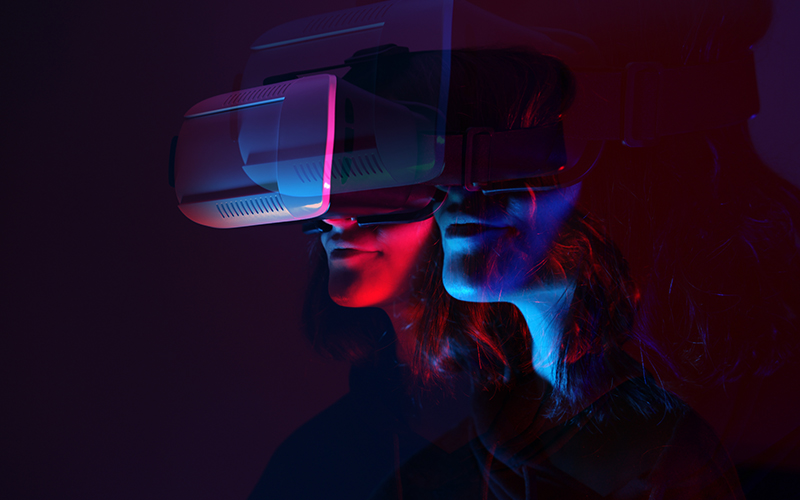Picture this: 3D images giving a clear picture of an anatomical part under surgery. A surgeon adjusts his instruments accordingly. The visuals on the screen change constantly, aligning with constantly updated information. The surgeon works with accuracy and precision, guided by the images. No, we are not describing a scene from a sci-fi movie. This is a Mixed Reality (MR) healthcare application in action.
Simply put, MR blends digital and physical worlds seamlessly and provides an interactive interface in real time. Under the bigger umbrella of extended reality (XR), MR lends superimposition and interaction of digital element overlays over physical representations. It occupies a central position in the virtuality continuum. MR is verily the melting pot of new age technologies – computer vision, motion tracking and artificial intelligence. Smartphone and mobile device penetration into the markets have helped the emergence of MR.
The global MR market size was at $2.7 billion in 2022 and is expected to grow at an astounding CAGR of 27% until 2030.
The table below provides a simple understanding of the terms and their relation to one another.
Extended Reality (XR) |
|||
|
Augmented Reality |
Mixed Reality |
Virtual Reality |
What is it? |
Digital overlays on the real physical world |
Superposition of digital elements into real world |
A fully-immersive digital environment |
Interaction |
Limited to no interaction between the digital and real world elements. |
Allows interaction between physical and digital elements |
Physical or real world is blocked out. User interacts with only the virtual elements. |
|
|
|
|
Example |
AccuVein; AR filters in Social media handles, overlay graphics, holograms |
Hololens, Proximie |
‘Walk the plank’ VR experience |
Some areas in the healthcare industry experiencing the positive effect of MR applications are discussed below.
Medical training – One of the earliest subjects that medical students are taught in the study of medicine is Anatomy. MR has managed to radically shift the 2-dimensional static study of the subject to a 3D version that gives a wholesome and realistic view of the human body enhancing the understanding of the subject at its very basic level. The nervous system is particularly difficult to study in a cadaver. Holoxica, a pioneering company that created the first 3D holographic ‘atlas’ of human anatomy is currently a front-runner in medical holography.
Surgical simulation – Preoperative imaging is now a widely adopted process for many surgical procedures. For intricate, complex and difficult surgeries, surgical simulations can provide additional planning and practice. The access to hands-free, real-time preoperative imaging systems can help reduce the risk of infections during surgery. Reconstructive surgeries find holographic MR overlays immensely useful as they help surgeons see the natural course of blood vessels, tissues and bones, eventually leading to seamless and error-free operations. Some of the wearable devices used for surgeries are Microsoft Hololens 2016 and Magic leap One (2018) with holographic and spatial computing capabilities.
Minimally invasive surgeries – MR applications have been most successful in minimally invasive surgeries like laparoscopy.
Improved patient care and education – As simple as it may seem, MR applications have directly increased patient understanding of their current condition, the treatment course making them more cooperative and informed.
Borderless Operating rooms – As if as an extension of Doctors without Borders, MR technology Proximie has enabled doctors to virtually scrub-in into a virtual operating theatre to share their expertise and mentor others. The surgeon present virtually can verbally instruct and annotate patient scans, x-rays in real-time to help achieve the best results in surgery. A live camera feed to an internet connected device is needed to achieve this virtual annotation.
In conclusion, mixed reality has emerged as a groundbreaking and transformative technology in the realm of healthcare. Its ability to seamlessly blend the physical and digital worlds has unlocked a plethora of possibilities that were once the stuff of science fiction. As is evident from the use cases discussed above, mixed reality applications in healthcare are already yielding remarkable benefits.
From enhancing medical training and education to revolutionising surgical procedures, mixed reality is equipping healthcare professionals with powerful tools to improve patient outcomes.
While we've seen great strides in this field, the journey is far from over. Continued research, development, and collaboration between technology companies, healthcare institutions, and regulatory bodies are essential to fully harness the potential of mixed reality in healthcare.
As we move forward, it is crucial to address issues of data security and privacy, to ensure that this technology is accessible and affordable for all, and to continuously evaluate its impact on patient care. With responsible implementation, mixed reality holds the promise of revolutionising healthcare, making it more efficient, effective, and patient-focused than ever before. The future of healthcare is increasingly mixed, and the possibilities are nothing short of extraordinary.
* For organizations on the digital transformation journey, agility is key in responding to a rapidly changing technology and business landscape. Now more than ever, it is crucial to deliver and exceed on organizational expectations with a robust digital mindset backed by innovation. Enabling businesses to sense, learn, respond, and evolve like a living organism, will be imperative for business excellence going forward. A comprehensive, yet modular suite of services is doing exactly that. Equipping organizations with intuitive decision-making automatically at scale, actionable insights based on real-time solutions, anytime/anywhere experience, and in-depth data visibility across functions leading to hyper-productivity, Live Enterprise is building connected organizations that are innovating collaboratively for the future.








